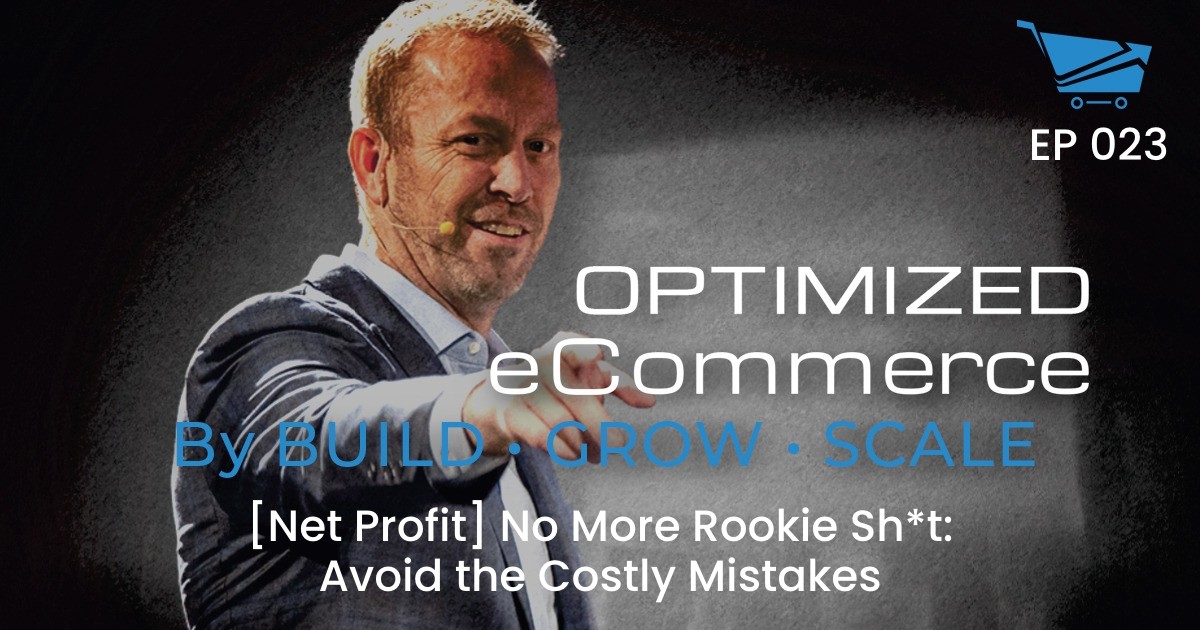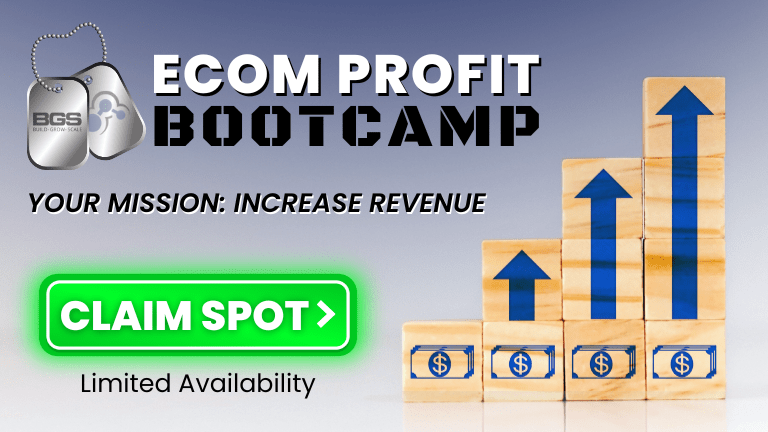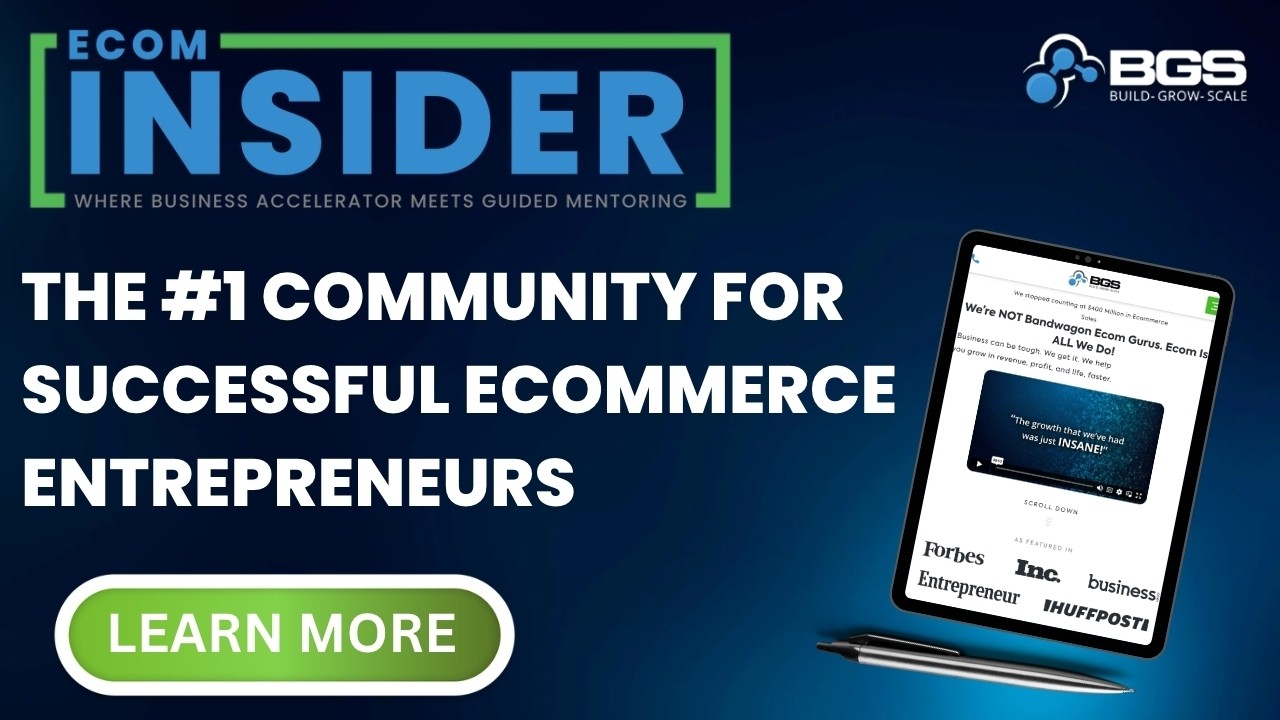Optimized Ecommerce EP 023 – [Net Profit] No More Rookie Sh*t: Avoid the Costly Mistakes

Welcome to Episode 023 of Optimized Ecommerce – [Net Profit] No More Rookie Sh*t: Avoid the Costly Mistakes. I’m your host Tanner Larsson CEO of BGS with today’s featured guest Brad Owens.
Brad is joining us in today’s episode. He is an esteemed member of our BGS optimization team. He brings along with him years of experience and expertise on how to start your ecommerce store and the things you need to avoid while running it.
Today, we will dive into the most common mistakes in the Ecom space and save you a lot of time, effort, and money. And of course, valuable tips on how to avoid them.
BGS means Build Grow Scale! It is a community that we founded where eCommerce entrepreneurs and physical product sellers come to learn how to take their businesses to the next level.
Here’s just a taste of what we talked about today:
Less is definitely more
It is a common scenario especially with people who have just begun with their Ecom stores to add all the apps they thought they need to bring in people and pump up the sales. But little do they know that it’s hurting their sites more than benefiting from it. One particular reason is that the more app you have installed, the slower your site’s loading time becomes. It has a direct effect on your site speed. So just pick out the apps that address a specific need.
Unless you’re Amazon, don’t be a general store
Most businesses will start out as general stores that sell anything and everything through dropshipping, but all the facts and figures say that this is the one thing that beginners should avoid altogether to establish a name for their stores. Be a store that sells something specific. Something with a targeted market.
Narrow down options
This is true if you have a lot of categories in your store. The goal is to help give your visitors the best shopping experience and not confuse them with the products that you have for sale. So to make this work, you either have to have an optimized search bar or you can arrange your products well. Do this by presenting the customer your top-selling products and if you can eliminate the products that don’t sell, the better. In short, do not overwhelm customers with a ton of choices cause you risk them leaving the store.
We also discussed a few other fun topics, including:
- Your Home Page matters, so make it look as interesting as possible by making use of your value propositions.
- Top bar navigation should not distract people from their real purpose. It should not contain links that will drive potential customers away from your store.
- Take time to provide clean and clear details of the products that you are selling. Do not just copy what you see on the sites where you got the products from. Take your own pictures and write your own description. This is what will separate you from your competition.
But you’ll have to watch or listen to the episode to hear about those!
How To Stay Connected With Brad
Want to stay connected with Brad? Please check out their social profiles below.
- Facebook Profile: Facebook.com/BuildGrowScale
- LinkedIn: Linkedin.com/company/build-grow-scale
- YouTube Channel: https://www.youtube.com/channel/BuildGrowScale
Resources
Also, Brad mentioned these items on the show. You can find that on:
- Ecommerce Evolved by Tanner Larsson
- PlaceIt.net – A library of online mockups; video and design template generator.




